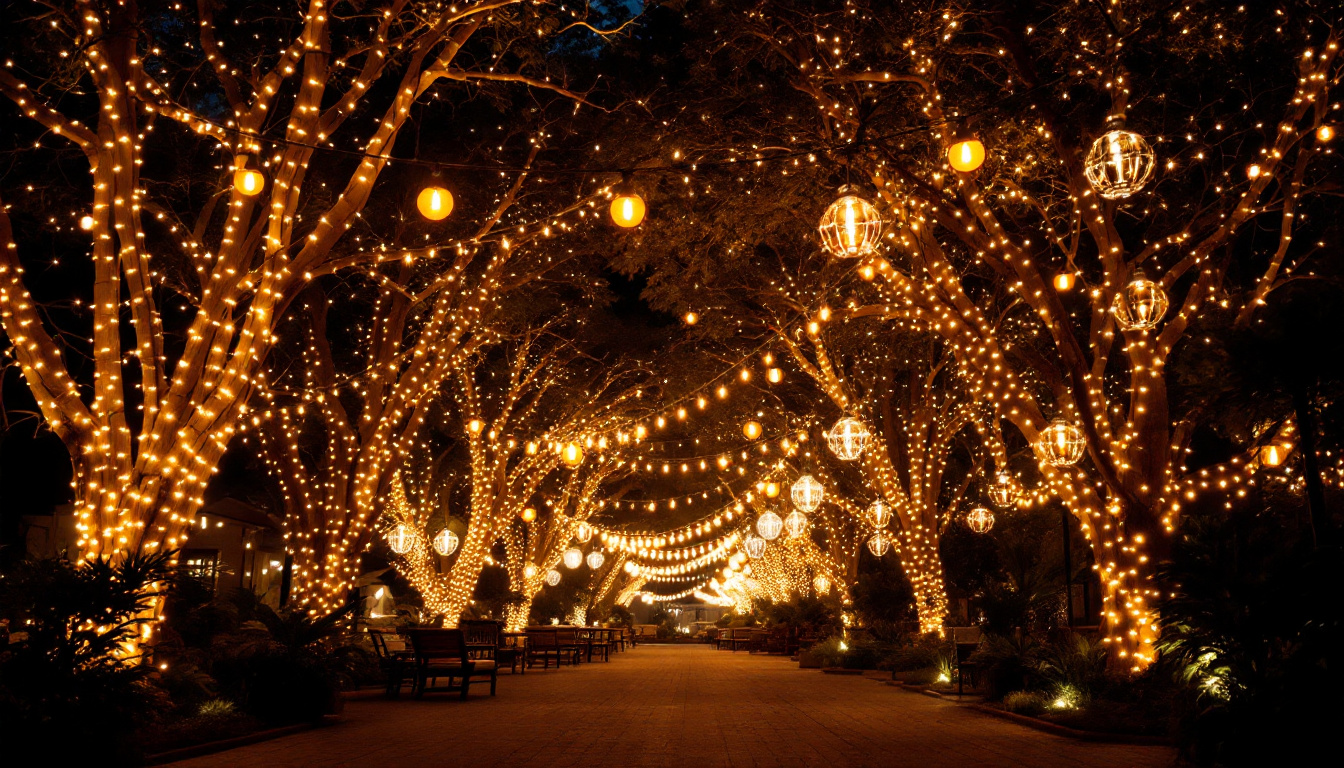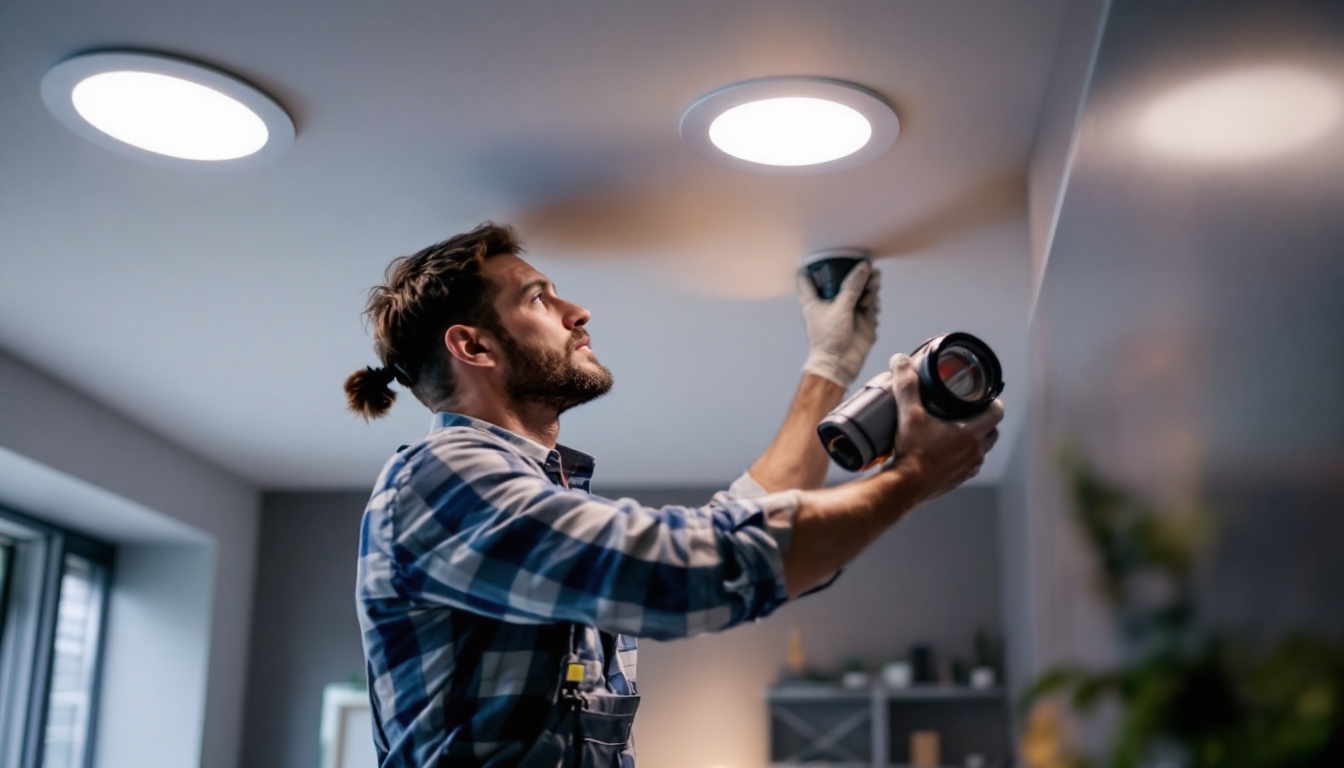
In the realm of outdoor lighting, the use of light strands has gained significant traction among homeowners and businesses alike. As a lighting contractor, understanding the nuances of outdoor light strands is essential for providing top-notch service and ensuring client satisfaction. This article delves into the various aspects of outdoor light strands, from design considerations to installation tips, ultimately equipping contractors with the knowledge needed to excel in this growing market.
Outdoor light strands, often referred to as string lights, are versatile lighting solutions that can enhance the ambiance of outdoor spaces. They come in various styles, lengths, and light types, making them suitable for a wide range of applications, from festive decorations to permanent installations. Whether you’re looking to create a romantic atmosphere for an evening gathering or simply want to illuminate your backyard for safety, outdoor light strands can be tailored to meet your specific needs.
When selecting outdoor light strands, it’s crucial to consider the different types available. Common options include incandescent, LED, and solar-powered strands. Each type has its own set of advantages and disadvantages. Incandescent strands offer a warm glow that many find appealing, but they consume more energy and have a shorter lifespan compared to LEDs. On the other hand, LED strands are energy-efficient and long-lasting, making them a popular choice for both residential and commercial applications. Solar-powered strands provide an eco-friendly option, utilizing sunlight to charge during the day, though their brightness can vary based on weather conditions.
In addition to these common types, there are also specialty light strands that can add unique flair to your outdoor space. For example, fairy lights are tiny, delicate bulbs that can create a whimsical feel when draped over trees or along fences. Additionally, smart outdoor light strands can be controlled via smartphone apps, allowing users to adjust brightness and color settings remotely, making them an excellent choice for tech-savvy homeowners looking to customize their outdoor lighting experience.
Design plays a pivotal role in the effectiveness of outdoor light strands. Contractors should consider the overall aesthetic of the space and how the lighting will complement existing features. Factors such as color temperature, bulb size, and spacing can significantly impact the final look. For instance, warmer color temperatures create a cozy atmosphere, ideal for residential patios or outdoor dining areas. In contrast, cooler temperatures may suit modern commercial spaces. Moreover, the spacing of the lights can affect the intensity of the illumination, so careful planning is essential to achieve the desired effect.
Furthermore, the installation method can also influence the overall design. Hanging strands from trees or pergolas can create a magical canopy effect, while wrapping them around railings or columns adds a touch of elegance. It’s also important to consider the durability of the materials used, especially in areas prone to harsh weather conditions. Selecting weather-resistant strands can ensure longevity and maintain the aesthetic appeal throughout the seasons. Additionally, incorporating dimmers or timers can provide flexibility, allowing you to adjust the lighting based on the occasion or time of day, further enhancing the outdoor experience.
Proper installation is key to ensuring the longevity and functionality of outdoor light strands. Contractors must be equipped with the right techniques and tools to execute a flawless installation.
Before installation begins, a thorough assessment of the site is necessary. This includes measuring the area where the light strands will be hung and determining the power source. It’s important to plan the layout to avoid any obstacles and ensure even distribution of light.
Additionally, selecting the right mounting hardware is crucial. Depending on the installation surface, options may include hooks, clips, or tension wires. Each method has its own advantages, and the choice will depend on the specific requirements of the project. For instance, using clips can provide a more discreet appearance, while tension wires may be preferable for larger areas where stability is paramount. Contractors should also take into account the aesthetic goals of the installation, as the right hardware can enhance the overall visual appeal of the lighting design.
Safety should always be a priority when working with outdoor lighting. Contractors must ensure that all electrical connections are weatherproof and that the light strands are rated for outdoor use. Using GFCI (Ground Fault Circuit Interrupter) outlets is also recommended to prevent electrical hazards.
Furthermore, securing the strands properly will prevent them from being damaged by wind or other environmental factors. Regular maintenance checks can help identify any wear or damage before it becomes a larger issue. This includes inspecting the integrity of the electrical connections, checking for frayed wires, and ensuring that any mounting hardware remains secure. Additionally, it’s wise to educate clients about the importance of seasonal maintenance, such as removing debris that may accumulate around the lights, which can lead to moisture build-up and potential electrical issues. By fostering a proactive maintenance approach, contractors can help clients enjoy their outdoor lighting for many seasons to come.
Regular maintenance of outdoor light strands is essential to ensure their longevity and optimal performance. Contractors should educate clients on the importance of routine checks and offer maintenance services as part of their offerings.
Encourage clients to inspect their light strands periodically, especially after severe weather conditions. Checking for loose bulbs, frayed wires, or corrosion can prevent larger issues down the line. Simple tasks like cleaning the bulbs can also enhance brightness and overall performance.
In addition, contractors should provide clients with guidance on how to store light strands during off-seasons. Proper storage can significantly extend the lifespan of the lights, reducing the need for replacements. Suggest using original packaging or dedicated storage bins to keep the strands untangled and protected from moisture and pests. Furthermore, advising clients to wrap the lights in a manner that prevents kinks or breaks will ensure they are ready for use when the festive season arrives.
Despite the best efforts in installation and maintenance, issues can still arise. Common problems include flickering lights, sections of the strand not lighting up, or unexpected outages. Understanding how to troubleshoot these issues is vital for contractors.
Flickering lights may indicate loose connections or a faulty bulb. Checking each connection and replacing any defective bulbs can often resolve the issue. For sections of the strand that are not lighting up, it’s essential to inspect the wiring for breaks or damage, as well as ensuring that the entire strand is properly connected to the power source. Additionally, contractors should encourage clients to familiarize themselves with the specific type of lights they are using, as some LED strands have built-in fuses that can blow and require replacement. This knowledge can empower clients to address minor issues themselves, saving time and money.
Another common issue that may arise is the presence of moisture within the light fixtures, which can lead to short circuits or corrosion. Educating clients on the importance of ensuring that all connections are sealed and protected from the elements can help mitigate this risk. Suggesting the use of weatherproof covers or junction boxes can further safeguard the electrical components. By taking these proactive steps, clients can enjoy their outdoor lighting displays without the worry of unexpected failures.
In a competitive market, providing an exceptional client experience can set contractors apart. This involves not just the quality of installation but also the level of service offered throughout the project.
Offering personalized consultations can help contractors better understand the specific needs and preferences of their clients. This includes discussing design ideas, budget considerations, and any special requests. By tailoring solutions to individual clients, contractors can foster a sense of trust and satisfaction.
Customization can also extend to the selection of light strands. Providing clients with a range of options, from styles to colors, allows them to make informed decisions that align with their vision for the space.
After the installation is complete, maintaining communication with clients can enhance their experience. Offering post-installation support, such as troubleshooting assistance or maintenance reminders, demonstrates a commitment to customer satisfaction.
Additionally, contractors can provide clients with resources or guides on how to best utilize their new outdoor lighting. This can include tips on creating different moods with lighting or suggestions for seasonal decorations.
The outdoor lighting industry is constantly evolving, with new trends emerging that can influence the way contractors approach their projects. Staying informed about these trends can help contractors remain competitive and meet client expectations.
Smart lighting is becoming increasingly popular in outdoor settings. Clients are looking for solutions that can be controlled via smartphone apps or voice commands. Incorporating smart technology into outdoor light strands can provide added convenience and customization for clients.
Contractors should familiarize themselves with various smart lighting options, including programmable timers and color-changing bulbs. Offering these solutions can enhance the appeal of outdoor lighting installations and attract tech-savvy clients.
As sustainability becomes a priority for many consumers, eco-friendly lighting options are gaining traction. Solar-powered light strands and energy-efficient LEDs are excellent choices for environmentally conscious clients.
Contractors can position themselves as leaders in sustainability by promoting these options and educating clients on their benefits. This not only aligns with current trends but also contributes to a positive brand image.
Outdoor light strands present a myriad of opportunities for lighting contractors. By understanding the various types of strands, mastering installation techniques, and staying informed about industry trends, contractors can provide exceptional service that meets the evolving needs of their clients.
From enhancing outdoor spaces to creating memorable experiences, the impact of well-designed outdoor lighting cannot be overstated. By prioritizing quality, safety, and customer satisfaction, contractors can thrive in this dynamic market, ensuring that their clients enjoy the beauty and functionality of outdoor light strands for years to come.
Ready to elevate your outdoor lighting projects with the finest light strands on the market? Look no further than LumenWholesale. We provide lighting contractors with exceptional, spec-grade lighting products at unbeatable wholesale prices. Say goodbye to local distributor markups and hello to our extensive selection that meets the highest industry standards. With LumenWholesale, you can count on reliable, high-performance lighting that will dazzle your clients. Plus, enjoy the convenience of bulk buying with free shipping, ensuring you get the premium lighting you need at the best value. Don’t compromise on quality or price. Wholesale Lighting at the Best Value is just a click away.

Discover how 2-inch LED recessed lighting is revolutionizing the work of lighting contractors.

Discover essential tips and expert advice for lighting contractors on mastering the installation of kitchen under cabinet lights.

Discover essential insights into decorative fixture bulbs tailored for lighting contractors.

Discover innovative cost-saving strategies for lighting contractors using UVC light technology.